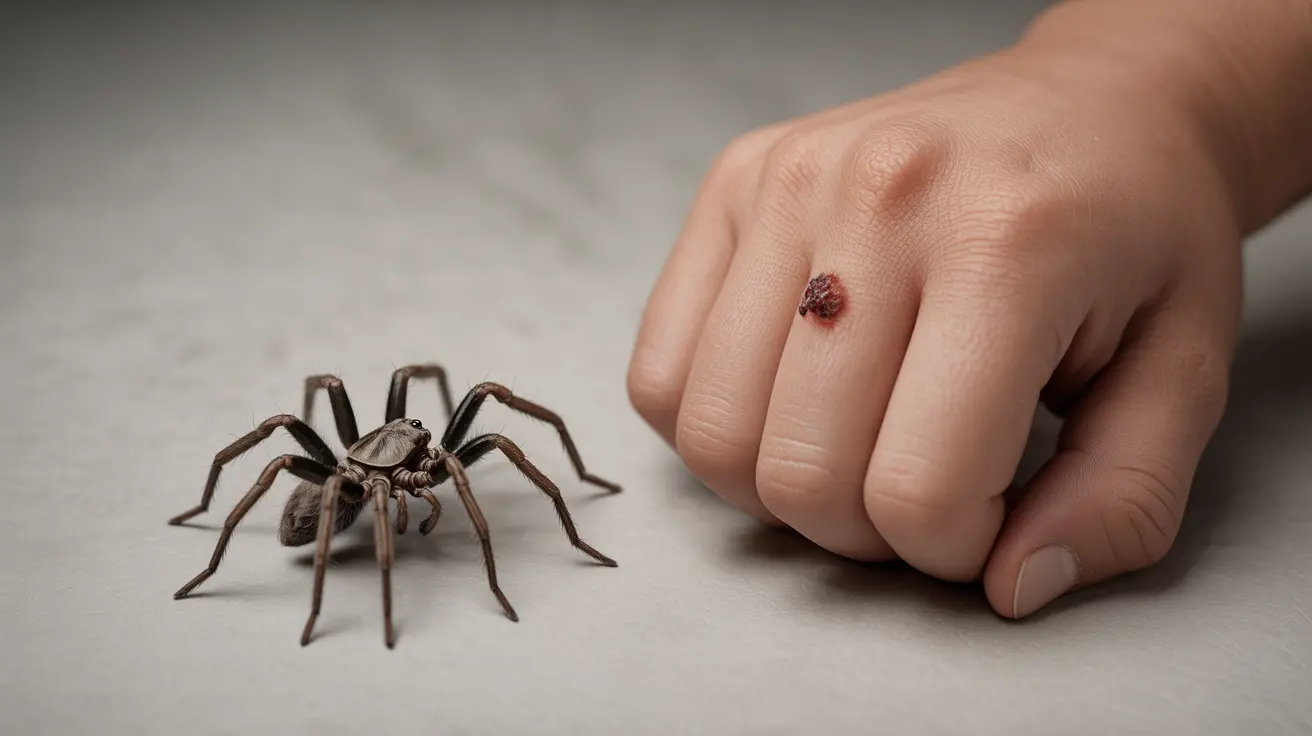Wolf spiders, with their large size and hairy appearance, can be intimidating. However, despite their fearsome looks, these arachnids are generally harmless to humans. Still, wolf spider bites do occur occasionally, and it's important to understand what they look like, how to treat them, and when medical attention might be necessary. This article will explore wolf spider bites in detail, providing you with the information you need to identify, treat, and prevent these encounters.
What Are Wolf Spiders?
Wolf spiders belong to the Lycosidae family and are known for their hunting behavior rather than web-spinning. These ground-dwelling spiders can range from one-fourth inch to one inch in body length and typically have a lifespan of up to two years. Their coloration is usually dark gray, brown, or black, sometimes featuring white and tan stripes that aid in camouflage.
These arachnids are recognizable by their large size, hairy bodies, and long legs. They possess excellent eyesight, which helps them in hunting prey. Wolf spiders are often found in ground habitats near water sources or occasionally inside homes, where they seek shelter and food.
Wolf Spider Behavior and Ecology
Wolf spiders play a beneficial role in ecosystems by feeding on other insects, helping to control pest populations. They also serve as prey for various animals, including rodents, birds, and reptiles. One fascinating aspect of wolf spider behavior is how females care for their young. They carry their egg sacs attached to their spinnerets and, once the spiderlings hatch, the mother allows them to ride on her back until they're ready for independence.
Wolf Spider Bite Appearance and Symptoms
Wolf spider bites can resemble those of other spiders, making identification challenging. However, there are some characteristics and symptoms to look out for:
- Visible fang marks: Two side-by-side punctures may be visible at the wound site.
- Localized symptoms: Itching, rash, pain, and skin discoloration around the bite area.
- Mild systemic reactions: Some individuals may experience muscle cramping or the development of small blisters.
It's important to note that most wolf spider bites are self-limiting and harmless to humans. The venom of wolf spiders is not considered toxic to people, unlike that of more dangerous species like the brown recluse or black widow.
Potential Allergic Reactions
While rare, severe allergic reactions to wolf spider bites can occur. Signs of a serious allergic response may include:
- Rapid heart rate
- Difficulty breathing
- Trouble swallowing
- Chest tightness
- Swelling of the mouth or face
If you experience any of these symptoms following a suspected spider bite, seek immediate medical attention.
Treatment and Home Care for Wolf Spider Bites
In most cases, wolf spider bites can be effectively treated at home. Here are some steps to follow:
- Clean the bite area thoroughly with soap and water to prevent infection.
- Apply ice or a cool washcloth to reduce swelling and alleviate pain.
- Use over-the-counter pain relievers and antihistamines if needed for discomfort or itching.
- Consider applying an antibiotic ointment if you're concerned about potential infection.
While these steps are usually sufficient, it's advisable to seek medical attention if the bite victim is a young child or if you notice any signs of a severe allergic reaction.
Preventing Wolf Spider Encounters
To minimize the risk of wolf spider bites, consider implementing these prevention strategies:
- Keep living spaces clutter-free, especially avoiding piles of clothes or boxes that mimic outdoor habitats.
- Seal entry points around windows, doors, and foundations to prevent spiders from entering your home.
- Maintain a tidy yard, removing debris and keeping grass short to reduce attractive habitats near your home.
- Use caution when moving stored items, especially in basements, garages, or outdoor sheds where wolf spiders may hide.
Remember, wolf spiders are beneficial for pest control. If you find one indoors, consider safely relocating it outside rather than killing it.
Frequently Asked Questions
What does a wolf spider bite look like, and how can you tell it apart from other spider bites?
A wolf spider bite typically appears as two small puncture marks side by side, often accompanied by redness, swelling, and mild pain. Unlike more dangerous spider bites, such as those from brown recluses, wolf spider bites usually don't cause severe tissue damage or necrosis. However, definitive identification often requires expert examination, as many spider bites look similar.
How do you treat a wolf spider bite at home, and when should you see a doctor?
To treat a wolf spider bite at home, clean the area with soap and water, apply a cold compress to reduce swelling, and use over-the-counter pain relievers if needed. See a doctor if you experience severe pain, spreading redness, or signs of infection. Always seek immediate medical attention if you have symptoms of an allergic reaction, such as difficulty breathing or swelling of the face.
Are wolf spider bites dangerous, and what are the signs of an allergic reaction?
Wolf spider bites are generally not dangerous to humans. However, allergic reactions, though rare, can be serious. Signs of an allergic reaction include rapid heart rate, difficulty breathing, swelling of the face or throat, and widespread hives. If you experience these symptoms after a bite, seek emergency medical care immediately.
How can I prevent wolf spiders from entering my home and reduce bite risks?
To prevent wolf spiders from entering your home, seal cracks and crevices in foundations and walls, keep your yard tidy, and reduce clutter inside. Use door sweeps and repair torn window screens. When working in areas where spiders might hide, like storage spaces or gardens, wear gloves and shake out stored items before use.
What's the difference between a wolf spider bite and a brown recluse or black widow bite?
Wolf spider bites typically cause only mild, localized symptoms. Brown recluse bites can lead to severe tissue damage and necrosis, often with a characteristic "bull's-eye" pattern. Black widow bites may cause intense pain that spreads from the bite site and can lead to severe muscle cramps and spasms. If you suspect a bite from a brown recluse or black widow, seek immediate medical attention.
Understanding wolf spider bites can help alleviate fears and ensure proper treatment if an encounter occurs. While these spiders may look intimidating, they play a valuable role in our ecosystems and generally pose little threat to humans. By taking simple precautions and knowing how to respond to bites, you can coexist safely with these fascinating arachnids.




